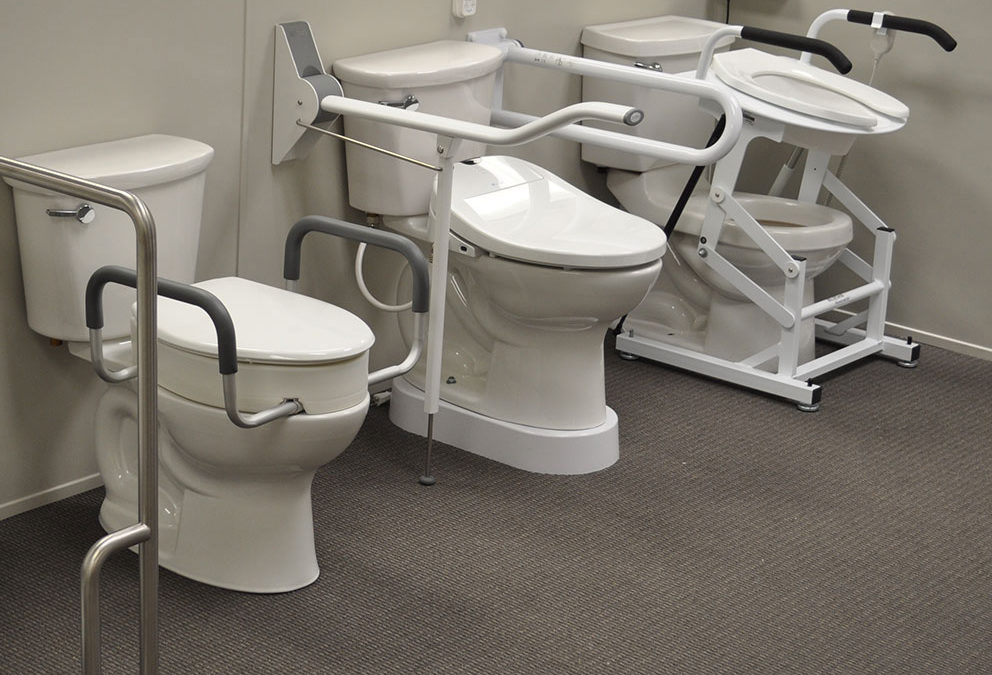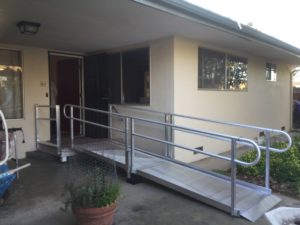Home Modifications and Cerebral Palsy
Building and home modifications provide barrier-free access and inclusion for any individual, with or without disability. Designers use the term “design for all” to describe products, services and systems designed for use by many individuals and many ability levels. The concept of “barrier-free accessibility” addresses the notion that a disability is a handicap only if it prevents a person from doing what others are able to do freely. If the barrier is non-existent, so is the handicap.
About home modifications
Home modifications address environmental barriers that prevent a person with disability from entering, utilizing, or accessing space. Barriers prevent independence and create frustration. Sometimes barriers ensure a person does not have access or opportunity.
Occupational and vocational therapists are trained to analyze an individual’s home, school, and work environments to prescribe and recommend modifications to meet specific needs. They may have contacts for bids, procurement, and funding opportunities. Once installed, they provide or arrange for instruction on how to use the new technology.
Home modifications are part of the worldwide commitment for universal design standards, which are encouraged by the World Health Organization and its member states, including the United States. Policies and regulations govern construction of government buildings, community spaces, architectural design, and public travel areas. Government housing authorities work in tandem with architectural and product design engineers to establish industry standards for structures and products that will accommodate the widest possible range of individual needs.
Individuals who provide home modification services include:
- Adaptive Equipment and Assistive Technology Procurement Experts
- Architectural Design Engineers
- Loan Specialists
- Occupational Therapists
- Product Design Engineers
- Real Estate Specialists
- Tax Experts
- Vocational Therapists
- U.S. Department of Housing and Development Agents
- Universal Design Specialists
Fair Housing Accessibility Guidelines
On September 13, 1988, The Fair Housing Amendments Act of 1988 amended the Civil Rights Act of 1968 to incorporate prohibitions against discrimination. According to the Act, after March 13, 1991 it became unlawful to construct multifamily dwellings inaccessible to those with disabilities. The act established housing design and construction requirements for accessible dwellings.
On March 6, 1991 the Department of Housing and Urban Development (HUD) published the Fair Housing Act Guidelines which provide direction on seven key requirements:
- Accessible building entrance on accessible route
- Accessible common and public use areas
- Usable doors (for those using wheelchairs)
- Accessible route into and through the dwelling unit
- Light switches, electrical outlets, thermostats and other environmental controls in accessible locations
- Reinforced walls for grab bars
- Usable kitchens and bathrooms
These design specifications are guidelines which can also be used for modifications a person may wish to consider on his or her own home. Many other methods of home modification may be found by searching online for “universal design for homes.”
Universal Design
A concept termed “universal design” was furthered by Ron Mace, an architect, product designer and educator. In 1997, he and a committee of ten individuals penned seven principles of universal design which became the building blocks for barrier-free environments. They are:
- Equitable use – a design that is appealing to all users and provides privacy, security, and safety to all. All users are provided identical, or at least equivalent, use.
- Flexibility in use – a design that accommodates varying methods of use, preference, and abilities. Flexibility also incorporates differing levels of accuracy, precision and user pace.
- Simple and intuitive use – a design that is easy to use, eliminates unnecessary complexity, and accommodates varying levels of user experience, knowledge, language skills or education level.
- Perceptible information – a design that is easily understood with the individual’s experience, knowledge, language skills, or education level. Appeals to various sensory abilities and limitations.
- Tolerance for error – a design with built-in safety features in an effort to minimize the consequences of accidental or unintended use. Hazardous elements are eliminated, isolated, or shielded in a manner to provide fail-safe features and warnings.
- Low physical effort – a design that is efficient and can be used comfortably with minimal effort. This includes neutral body positioning, reasonable operating force, and less reliance on repetitive actions or sustained physical effort.
- Size and space for approach and use – a design with appropriate size and space to approach, reach, manipulate, and use regardless of the user’s body size, posture, or mobility.
Today, the universal design concept is embraced by those involved in home design and construction. Some standards are even required by law. Funds are available to encourage modification of old and existing buildings. The Department of Housing and Urban Development, or HUD, has initiatives towards home modifications and programs for affording them. With some modernization attempts, tax advantages are also available once the modifications are made.
In general, home modifications promote appealing, supportive, accessible, and inclusive living environments. These are considered barrier-free giving those with impairment increased mobility and self-sufficiency.
Modifications can be structural, including wider door openings, lowered cabinetry, wheelchair-friendly appliance loading levels, ramps, chair lifts, elevators and wheelchair friendly showers. Or, home modifications can include minor adaptations like grip-friendly doors, knobs, switches, flooring, lighting, safety and security features.
Professional consultations and appropriate modification recommendations ensure individual safety and well-being when selecting, purchasing, and implementing home modifications and assistive technology. These consultations lead to procurement of appropriate equipment based on unique needs of the individual with Cerebral Palsy. Funding resources, insurance coverage, and tax incentives may also be available to help cover home modification expenses that benefit the individual, the primary caregiver, and the rest of the family.
Home modifications may involve:
- Alert devices
- Bathtub with door
- Communication devices
- Door handles
- Door pushbars
- Elevators or stair lifts
- Enhanced lighting
- Grab bars
- Flashing lights
- Freestanding lavatory
- Hand-held shower
- Modified faucet
- Non-skid flooring
- Modified shelving
- Modified sink faucets
- Modified light switches
- Modified wall sockets
- Safety features
- Security systems
- Specially equipped telephones
- Raised lettering or braille
- Raised toilet seat
- Ramps
- Temperature regulator
- Transfer bench
- Wall ovens
- Widened doors or hallways
Home modifications can benefit an individual with Cerebral Palsy, or those who care for them. Lifting, straining, and assisting a person with disability can become a health hazard for caregivers, but up-to-date technology can improve the functionality of and quality of life in the household.
Home modification assistance
Those wishing to have a home evaluated for modifications can contact an occupational therapist, a rehabilitation specialist, or a building contractor for assistance. If the child is still in grade school, the home evaluation may be included in the Individualized Education Program. If the child is of school age, ask your school administrative contact for more direction.
Many resources are available for those wishing to learn more about fair housing, home modification rights, housing options, and current legislation, including:
- U.S. Department of Housing and Urban Development
- Fair Housing Act
- Fair housing rights
- Fair housing laws and presidential executive orders
Home modification funding resources
Funding resources for home modifications include loans, vouchers and low-income support. They include:
- Property improvement loans – Title I – accommodates affordable home improvement loans from private lenders that are funded by the government. The funds are to be used for light and moderate rehabilitation of properties, including permanent property improvements to protect or improve the basic livability or utility of the property.
- Rehabilitation loans – Section 203(k) – Allows individuals to finance the purchase or refinancing of a house. The funds can cover both the acquisition and the rehabilitation of the property.
- Housing choice vouchers – Section 8 – A subsidy for those that qualify for assistance in paying monthly public housing fees.
- Federally assisted housing – Reduced rental, or rent subsidies for housing in private apartment complexes which were renovated with public funds.
- Home ownership programs</li>
- Home loan programs
- Home tax credits


